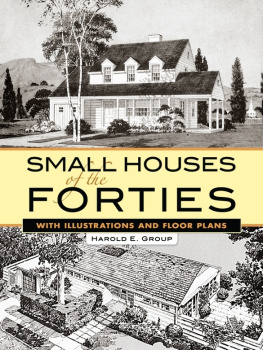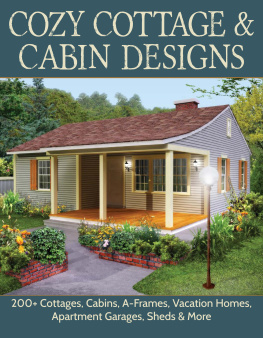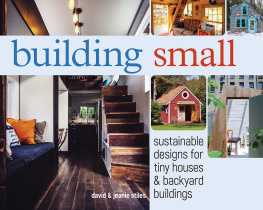THE
LOG
CABIN
BOOK


In the Wilderness.
THE
LOG
CABIN
BOOK
A Complete Builders Guide to Small Homes and Shelters
OLIVER KEMP
Illustrations by the author

DOVER PUBLICATIONS, INC.
MINEOLA, NEW YORK
Bibliographical Note
This Dover edition, first published in 2016, is an unabridged republication of the second (1911) revised edition of the work, originally published by The Outing Publishing Company, New York, in 1908, under the title and subtitle Wilderness Homes: A Book of the Log Cabin. All of the original line illustrations have been reproduced here in black and white.
Library of Congress Cataloging-in-Publication Data
Names: Kemp, Oliver, 18871934, author, illustrator.
Title: The log cabin book : a complete builders guide to small homes and shelters / Oliver Kemp.
Other titles: Wilderness homes
Description: Mineola, New York : Dover Publications, 2016. | This Dover edition, first published in 2016, is an unabridged republication of the work originally published by The Outing Publishing Company, New York, in 1908, under the title and subtitle Wilderness Homes: A Book of the Log Cabin.
Identifiers: LCCN 2016023359| ISBN 9780486810782 (paperback) | ISBN 048681078X
Subjects: LCSH: Log cabinsDesign and constructionAmateurs manuals. | BISAC: CRAFTS & HOBBIES / Woodwork. | HOUSE & HOME / Design & Construction. | SPORTS & RECREATION / Outdoor Skills. | HOUSE & HOME / House Plans. | HOUSE & HOME / Woodworking.
Classification: LCC TH4840 .K46 2016 | DDC 694dc23 LC record available at https://lccn.loc.gov/2016023359
Manufactured in the United States by RR Donnelley
81078X01 2016
www.doverpublications.com
FOREWORD
I F you love the out-of-doors, this book was written for you, to crystallize and bring into reality that vague longing which you have felt for a lodge in the wilderness.
Somewhere the trail has led you to the ideal spot in the deep forest, by the shores of a smiling lake or within sound of the murmuring waters.
Wherever you may choose to dwell in the woods, there will be found abundant material for a log cabin, and a days work will bring results big with pleasure and healthy enjoyment, for even the temporary sojourner in the wilderness cannot turn to better employment than that which will give him a home of his own handiwork.
This you will own with a new sense of proprietorship that hitherto you have not known. Work of your hands, your pride in its possession will increase with the improvements suggested by its occupancy from year to year.
We have purposely avoided the elaborate log structures, which by courtesy are called camps, for they are beyond the ability of the amateur to construct, had he ever so much time at his command. When you desire something more than is here shown, consult an architect, and for the building of it, by all means let the job.
The designs which are given have all been built and allow of numberless alterations to suit the whims and requirements of the builder. This much you are sure of: from the first your cabin will have the charm of a home, it will nestle among the trees like a real companion of the forest, though nature must have a few seasons in which to creep up to the doorsill and wipe away the scars of mans hasty building.
The methods of construction given are those of a thorough workman, though the operations may be greatly curtailed, especially in the smaller camps. A perusal of even the elaborate building directions will by no means daunt you. To have your home in the woods only two things are necessary, the time and the will.
In my own experience I have often wished for such a book as this, and I feel fortunate indeed in the friendship of Mr. D. L. Annis, of Sebec, Maine, to whose interested and practical tutoring I owe my knowledge of Log Cabin building.
Some years ago I contributed a couple of articles (which are incorporated in this book) on the subject to the magazine Field and Stream. The instant response indicated a need for the information contained herein. For that reason these pages were written during my leisure time in the woods and I send them out tried and tested.
Not the least important part of the book are the photographs, and in this connection I must acknowledge with pleasure my indebtedness for the valuable help afforded me by Mr. Harrie B. Coe, of Portland, Maine; Hon. Carter Harrison, of Chicago; Mr. George W. Kirkner, of New York; Mr. N. W. McNaughton, of Schoodic, and Mr. M. J. Marr, of Indian River, Maine, in supplying many of the photographs of their delightful Wilderness Homes.
MAKING PLANS
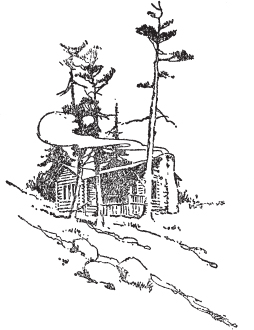
CHAPTER I
MAKING PLANS
P LANNING the woods home is a period of considerable pleasure. Everything about it will suggest the forest and the remote lake, where the big trout hide, and the deer come down in the evenings to feed on the tender grasses at the waters edge. It brings that great season near to which we look forward year after year from the city home.
The pleasure thus afforded is, however, but part of the satisfaction, for, guided by a sure knowledge of the possibilities and limitations of the subject, your plans will save you an infinite amount of work and time when the building operations actually begin. Then if one is careful to erect it in a commanding position, and will take the necessary care to adjust it to the surroundings, the resulting harmony and utility will be a source of constant satisfaction.
In the matter of fitting the cabin to the site, you have a tremendous advantage over the builder of structures for other situations than the woods. So long as you stick to the one-story or story-and-a-half building you are safe, for the log cabin will belong to its place as surely as if it grew there. After all, are not the bowlders gathered on the ground where the future cabin is to stand and the logs felled in the encompassing forest? There is nothing new about it; chameleon-like, with a simple touch of stain on the roof, it will take on the color of its surroundings, particularly if you, as the builder, do not get in the way. Let the material of the building show frankly for what it is. Let each part do its work honestly, and you need not fear for the attractiveness of your home. Its success will be measured not by its size nor by its architecture after all, but by its comfort.
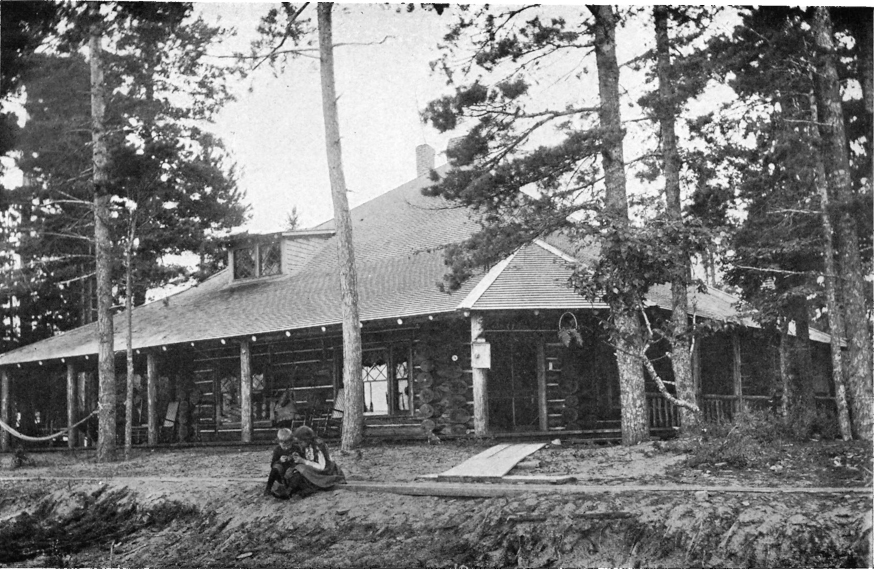
An Example of Cabin Much Too Elaborate for Amateur Building. Enough Trees have been Cut to Give All the Sunlight and Air Necessary, Yet in no Sense has the Forest been Pushed Away.
Fortunately there will be an outlook from every room, and we can let the light and air in from every side. The living room, with its high ceiling, will be given the choice of views, and we will call this the front of the house. In order to get all the out-of-doors possible into the house, plan for windows that are long rather than high.
Next page

